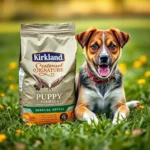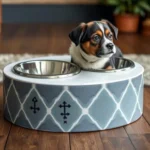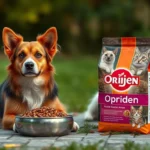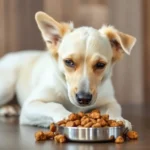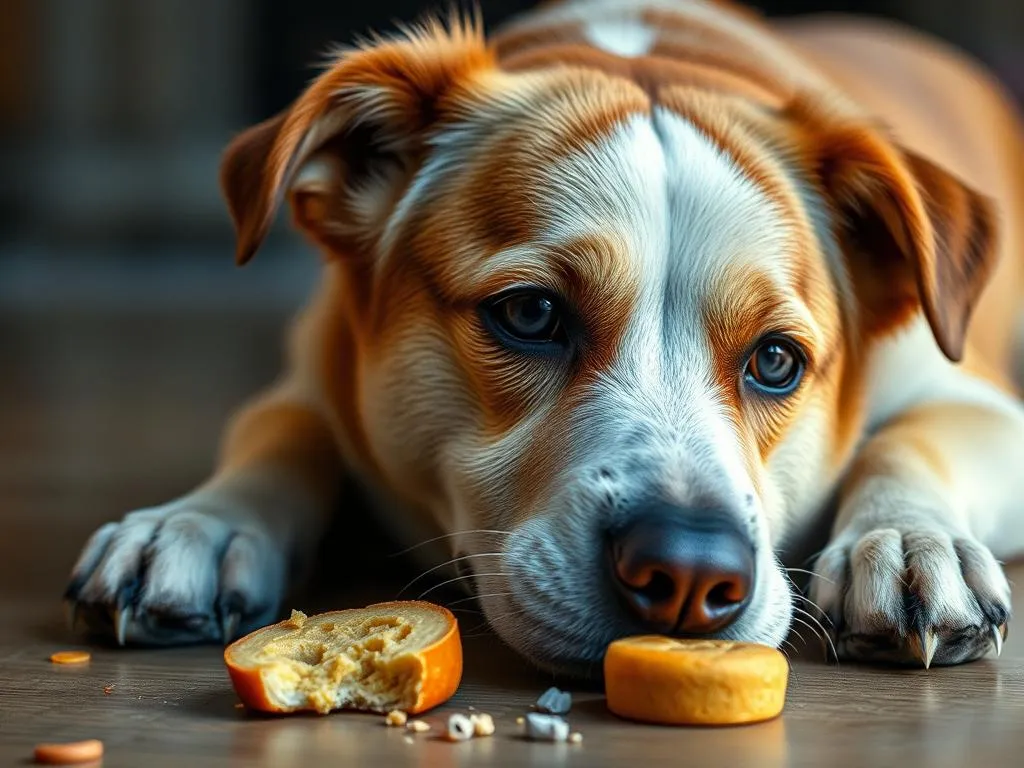
Introduction
Proper dog nutrition is vital for the overall health and well-being of our furry friends. Just like humans, dogs require a balanced diet that caters to their unique nutritional needs. However, many dog owners notice peculiar behaviors during mealtime, one of which is when dogs leave a single piece of food in their bowl. This behavior can be puzzling and may lead you to wonder, why does my dog leave one piece of food?
Understanding this behavior is essential for improving feeding practices and ensuring your dog receives the nutrition they need. In this article, we will explore the various reasons behind this behavior and provide actionable insights to help you better cater to your dog’s dietary requirements.
Understanding Dog Behavior
Natural Instincts
Dogs have evolved from their wild ancestors, who were primarily scavengers. This evolutionary background has instilled in them certain instinctual behaviors that influence their feeding habits. In the wild, dogs would often leave food behind as a survival tactic, either to save it for later or to avoid overindulging in a meal that could attract predators.
These instincts can manifest in domestic dogs, leading them to leave one piece of food in their bowl. Understanding these natural instincts can help owners recognize that their dogs may not be rejecting their food but rather displaying behavior rooted in survival.
Eating Habits of Dogs
Every dog is different, and their eating habits can vary based on several factors, including age, breed, and health. Puppies, for example, may have a more voracious appetite as they grow, while older dogs might be more selective about their food. Additionally, certain breeds may exhibit specific eating behaviors influenced by their history and genetics.
It’s essential for dog owners to observe their pets’ eating habits and recognize what is typical for their individual dog. If your dog consistently leaves one piece of food, it could be a part of their unique eating pattern rather than a cause for concern.
The Role of Senses
Dogs rely heavily on their senses, particularly smell and taste, to evaluate food. A dog’s olfactory senses are far superior to those of humans, making them particularly sensitive to the aromas of their meals. If a dog finds the smell of their food unappealing, they may leave behind pieces that do not meet their expectations.
Additionally, texture plays a significant role in a dog’s eating habits. Some dogs may prefer certain textures over others, leading them to leave food that doesn’t appeal to their palate. Understanding how dogs use their senses to assess food can provide insights into why they might leave one piece behind.
Possible Reasons for Leaving Food
Physical Health Issues
One of the primary reasons a dog may leave one piece of food is due to potential physical health problems. Dental issues can make chewing painful, leading dogs to avoid certain types of food or leave pieces behind. If you notice your dog favoring softer food or showing signs of discomfort while eating, it may be time for a veterinary check-up.
Additionally, digestive problems can affect a dog’s appetite. Food allergies or sensitivities can cause discomfort, leading them to avoid certain ingredients. If your dog consistently leaves food, it may be worth consulting with a vet to rule out any underlying health concerns.
Behavioral Factors
Stress or anxiety can significantly impact a dog’s eating habits. Changes in the home environment, such as new pets, moving to a new house, or loud noises, can cause anxiety in dogs, leading them to eat less or leave food uneaten.
Distractions during mealtime can also play a role. If your dog is in a busy or noisy environment, they may be unable to focus on their food, resulting in leftover pieces. Creating a calm and comfortable feeding area is crucial for encouraging healthy eating behaviors.
Food Quality and Preference
The quality of the food you provide and your dog’s taste preferences can significantly influence their eating habits. Dogs, like humans, have individual tastes, and some may be more discerning about what they eat. If the food is stale or of poor quality, your dog may leave it behind.
It’s essential to ensure that the food you provide is fresh and appealing to your dog’s taste buds. Opting for high-quality commercial dog food or exploring homemade diet options can make a significant difference in your dog’s eating behavior.
Nutritional Considerations
Balanced Diet Essentials
A balanced diet is crucial for your dog’s health, comprising proteins, fats, carbohydrates, vitamins, and minerals. Each nutrient plays a vital role in maintaining your dog’s overall well-being. For instance, proteins are essential for muscle development, while fats provide energy and support skin and coat health.
Understanding the nutritional needs of your dog is fundamental to ensuring they receive a diet that supports their health. Consult with your veterinarian to determine the best nutritional plan tailored to your dog’s specific needs.
Portion Control and Feeding Schedule
Feeding your dog the appropriate portion size is essential for maintaining their health. Overfeeding can lead to obesity, while underfeeding can result in malnutrition. It’s crucial to follow the feeding guidelines provided on your dog food package and adjust portions based on your dog’s age, breed, and activity level.
Establishing a consistent feeding schedule can also help regulate your dog’s eating habits. Dogs thrive on routine, and having set meal times can promote better eating behavior.
The Right Type of Food
When it comes to dog food, there are various options available, including dry and wet food. Each type has its advantages and disadvantages. Dry food is often more convenient and can help with dental health, while wet food may be more palatable and hydrating.
Choosing high-quality commercial dog food can make a significant difference in your dog’s eating habits. Alternatively, some owners opt for homemade diets, which can be tailored to their dog’s preferences. However, it’s essential to ensure that homemade meals are nutritionally balanced.
Solutions for Encouraging Better Eating Habits
Creating a Comfortable Eating Environment
To encourage better eating habits, it’s essential to create a comfortable and inviting eating environment for your dog. Minimize distractions during mealtime by providing a quiet space away from noise, other pets, and foot traffic. A calm atmosphere allows your dog to focus on their food and can lead to better eating behaviors.
Introducing Variety
Dogs can become bored with their food, which may lead them to leave pieces behind. To maintain interest, consider rotating food flavors and textures. Introducing a variety of high-quality foods can stimulate your dog’s appetite and encourage them to finish their meals.
Gradual Transitioning
If you’re considering changing your dog’s food, it’s crucial to transition gradually. Sudden changes can lead to aversion and digestive upset. Mix the new food with the old food over several days, gradually increasing the proportion of the new food. This gentle approach can help your dog adjust and reduce the likelihood of leaving food behind.
Monitoring Health and Behavior
Regular Veterinary Check-ups
Routine veterinary check-ups are essential for assessing your dog’s health and dietary needs. Regular visits allow your vet to monitor your dog’s weight, dental health, and overall well-being. If you notice significant changes in your dog’s eating habits, consult your veterinarian for professional guidance.
Observing Eating Patterns
Pay attention to your dog’s eating patterns and behaviors. Keeping track of any changes in food preferences, eating habits, or the frequency of leaving food behind can provide valuable insights into your dog’s health and well-being.
When to Seek Professional Help
If your dog consistently leaves food and shows signs of distress, it may be time to seek professional help. Signs that indicate a need for veterinary advice include persistent refusal to eat, weight loss, vomiting, or changes in behavior. Addressing these concerns promptly can help ensure your dog remains healthy and happy.
Conclusion
In summary, understanding your dog’s eating habits, including why does my dog leave one piece of food, is crucial for ensuring they receive the nutrition they need. By recognizing the various factors influencing their behavior—such as instinctual tendencies, health issues, and food quality—you can make informed decisions to improve their eating habits.
Being attentive to your dog’s needs and maintaining regular veterinary check-ups will ensure they thrive on a balanced diet. Remember, a healthy dog is a happy dog, and understanding their eating behavior is an essential part of responsible pet ownership.
FAQs
Why does my dog only eat part of their food?
Dogs may leave part of their food due to health issues, stress, or simply preference. It’s essential to monitor their eating habits and consult a vet if needed.
Is it normal for dogs to leave food?
While some dogs may occasionally leave food, consistent behavior may indicate health or behavioral issues that warrant attention.
What should I do if my dog is a picky eater?
Encourage better eating habits by creating a comfortable feeding environment, offering a variety of foods, and transitioning gradually to new diets. If concerns persist, consult your veterinarian for advice.




